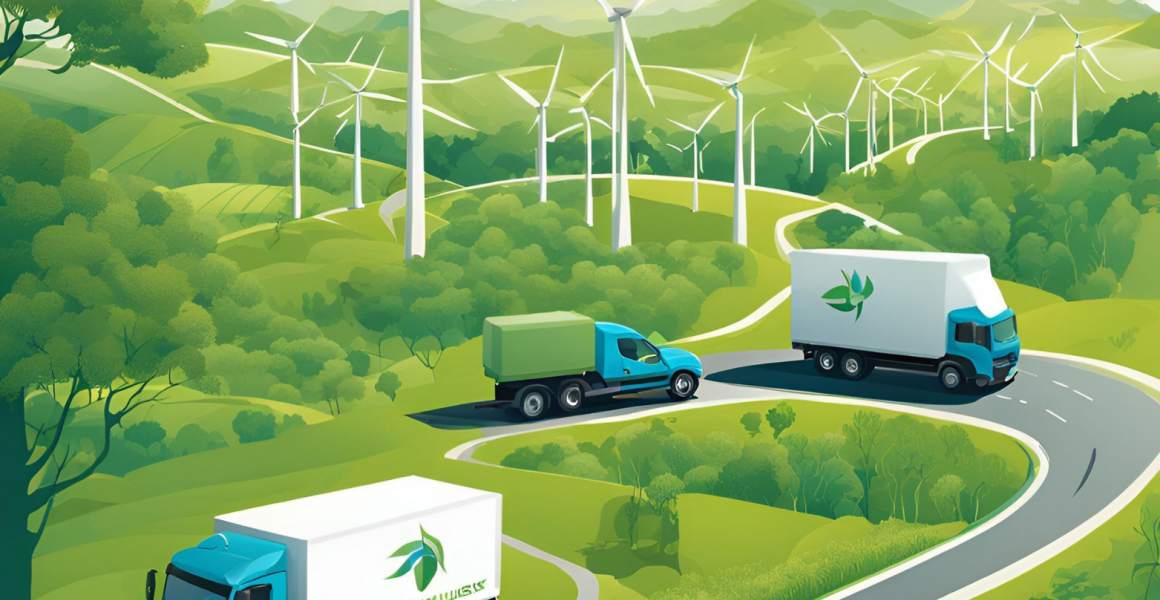Sustainable Logistics: Challenges and Solutions for a Greener Future

Today, sustainability has become a critical concern across all sectors, and logistics is no exception. Sustainable logistics refers to the planning, implementation, and control of logistics activities to minimize environmental impact while ensuring economic viability and social responsibility. As the demand for global transportation and distribution continues to grow, the need for sustainable logistics becomes increasingly urgent. This article explores the concept of sustainable logistics, the challenges it faces, and potential strategies to address these issues for a greener future.
Sustainable logistics involves optimizing supply chain operations to reduce carbon footprints, minimize waste, and promote environmental stewardship. Key components include the use of eco-friendly transportation modes, improved energy efficiency, adoption of renewable energy sources, and reduction of packaging waste. Sustainable logistics not only addresses environmental concerns but also enhances operational efficiency, reduces costs, and meets the growing demand for corporate social responsibility.
Despite its benefits, achieving sustainable logistics presents several challenges:
- Cost Implications: Transitioning to sustainable practices often requires significant upfront investments. For instance, adopting electric vehicles, renewable energy sources, or energy-efficient technologies can be costly, deterring decision-makers, especially in small and medium-sized enterprises (SMEs).
- Infrastructure Limitations: Existing logistics infrastructure is largely built around traditional fossil-fuel-based systems. Developing new infrastructure for sustainable logistics, such as charging stations for electric vehicles or facilities for renewable energy production, requires substantial time and resources.
- Technological Barriers: While technology is crucial for sustainable logistics, the rapid pace of technological advancement can be a barrier. Companies must continuously invest in research and development to keep up with innovations, which can be both challenging and expensive.
- Regulatory and Political Obstacles: Inconsistent regulatory frameworks and the lack of standardized policies across regions complicate efforts to implement sustainable logistics. Companies operating in multiple jurisdictions face challenges navigating diverse regulations and compliance requirements.
- Consumer Expectations: Consumers increasingly demand fast and efficient delivery services, which can conflict with sustainable logistics practices. Balancing speedy delivery with eco-friendly methods poses a significant challenge for companies aiming to meet customer expectations while reducing their environmental impact.
To overcome these challenges and promote sustainable logistics, several strategies can be implemented:
- Government Incentives and Regulations: Governments play a crucial role in promoting sustainable logistics by providing incentives such as tax breaks, grants, and subsidies for green initiatives. Additionally, enforcing strict regulations and standards for emissions, waste management, and energy use can drive companies to adopt sustainable practices.
- Investment in Research and Development: Continuous investment in research and development is essential for advancing sustainable logistics technologies. Public-private partnerships can facilitate innovation, and collaborative efforts can lead to the development of cost-effective and scalable solutions.
- Adoption of Green Technologies: Companies should leverage green technologies such as electric and hybrid vehicles, renewable energy sources, and energy-efficient equipment. Integrating Internet of Things (IoT) devices and data analytics can optimize route planning, reduce fuel consumption, and improve overall logistics efficiency.
- Collaboration and Partnerships: Collaboration among supply chain partners, including suppliers, manufacturers, distributors, and retailers, can enhance sustainability efforts. Joint initiatives to reduce emissions, share resources, and promote best practices can create a more sustainable logistics network.
- Consumer Education and Engagement: Educating consumers about the importance of sustainable logistics and encouraging eco-friendly choices can drive demand for greener solutions. Companies can promote sustainable practices through transparent communication, offering green delivery options, and incentivizing sustainable behaviors.
- Circular Economy Practices: Embracing circular economy principles, such as recycling, reusing materials or transport accessories, and designing products for longevity, can significantly reduce waste and resource consumption. Implementing reverse logistics systems for product returns and recycling can further enhance sustainability.
Sustainable logistics is not just a trend but a necessity to ensure the long-term viability of global supply chains. While the journey toward sustainability poses several challenges, they are not insurmountable. By adopting a multifaceted approach that includes government support, technological innovation, collaboration, and consumer engagement, businesses can overcome these obstacles and create a more sustainable and resilient logistics network. Ultimately, the transition to sustainable logistics will benefit not only the environment but also the economy and society as a whole, paving the way for a greener and more sustainable future.
